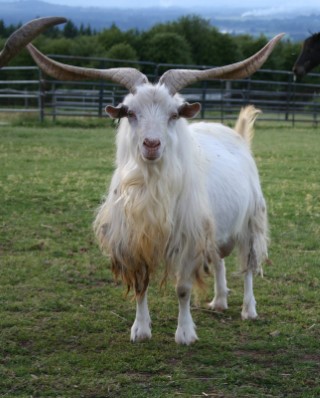In the 1970s, a pioneering endeavor saw the crossbreeding of wild goats from Australia with Spanish meat goats inhabiting the American Southwest. Through years of meticulous selective breeding, this initiative led to the development of the American Cashmere Goats, a distinctive breed known for their valuable cashmere fiber.
While still considered rare, the North American herd of American Cashmere Goats is steadily increasing in size, reflecting growing interest and recognition for their unique qualities.
American Cashmere Goats exhibit an intriguing natural cycle of fiber growth and shedding. Each summer, they begin growing a new coat of cashmere fiber, which gradually loosens and sheds in early spring. The natural color of their cashmere fiber ranges from light to chocolate brown, cream, white, or gray, adding to the allure of their fleece.
Beyond their prized fleece, American Cashmere Goats are characterized by remarkable intelligence, friendliness, and an easy-going temperament. They display a harmonious demeanor, getting along well with other animals, children, and their fellow herd members. Their affable nature extends to interactions with cattle and horses, making them ideal companions in mixed grazing environments.
These goats have versatile dietary preferences, favoring weeds, brush, pasture plants, and hay. While they primarily consume these natural forages, supplementary goat feed is provided during pregnancy and lactation, as well as during the early stages of kid rearing.
Despite their relatively large size, American Cashmere Goats have efficient digestive systems and do not consume large quantities of food. This efficient digestion process contributes to their low maintenance requirements, making them an attractive option for sustainable grazing practices and diversified livestock management.
